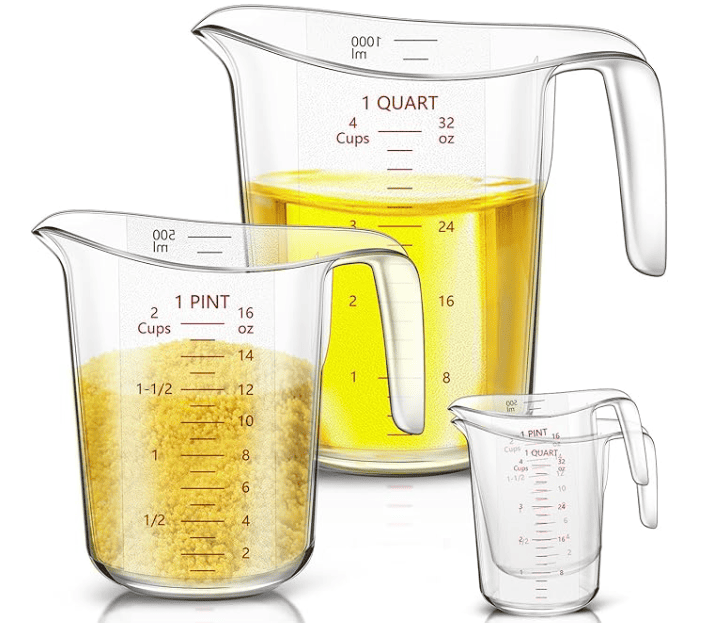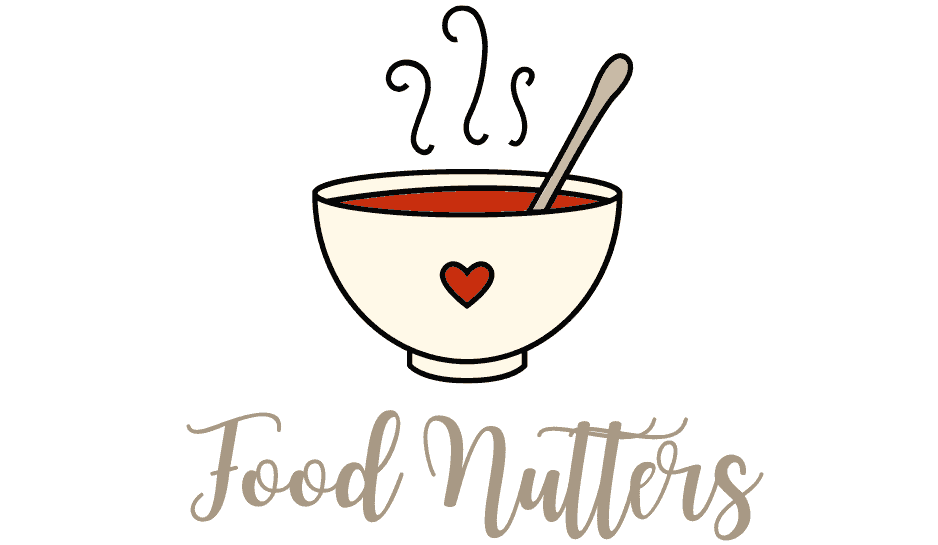1 US customary pint equals 2 cups (473.17 ml).
Convert cups to pints video summary
Free printable cups to pints conversion chart
Here you can also find other free printable conversion tables, like cups to liters conversion, cups to ml, cups to dl, and cups to tablespoons conversion charts.
A short history behind cups and pints
In 1790 the adoption of the British Imperial System was proposed, which included the pint, quart, and gallon.
The pint, a charming little unit of liquid goodness, made its way onto the scene. It was defined as 1/8th of a gallon, or if you’re into specifics, approximately 473.17 milliliters. Picture a cozy pub in colonial America, where pints of ale were passed around, and camaraderie was measured in sips.
You might think pints are like that forgotten spice in the back of your cupboard, but oh no! Pints are alive and kicking, making their presence felt every time you reach for a measuring cup.
Take a stroll down the dairy aisle of your local grocery store, and you’ll spot pints holding court. Milk, cream, and other liquid delights often come in these convenient pint-sized containers. It’s not just a matter of tradition; it’s about practicality – the perfect amount for your morning coffee or that spontaneous bowl of cereal.

International cup variations
Did you know a cup in the US isn’t the same size as in other countries? A standard US cup holds about 236 milliliters, but a metric cup is slightly larger at 250 mL. And in Canada, it’s a different story too.
This variation means that when you’re following an international recipe, you might need some recipe adjustments and might want to check our conversion charts for different kinds of cups to ml.
Pint differences around the world
Similarly, pints can vary too. In the US, we’re familiar with the liquid pint, which is about 473 mL. But cross over to the UK, and you’ll encounter the Imperial pint, which is approximately 568 mL. This difference can significantly impact your cooking, especially in baking, where being scrupulous with ingredients is crucial.
The US customary cups to pints conversion
So how do you do it? Well, transforming cups into pints is simpler than summoning your favorite recipe genie. Here’s the secret handshake:
US cup = pint / 2
US cup = 473.17 ml / 2
therefore,
1 US pint = 2 cups = 236,588 ml x 2

The UK cups to pints conversion
Contrary to the US customary pint, the UK pint adheres to the imperial system. As a unit of volume, the imperial pint holds a 20% larger capacity compared to its US counterpart.
Because the difference between the US Pint and the UK Pint is rooted in the distinct measurement standards employed by each nation, this results in a different volume. While the US pint holds approximately 473.176 milliliters, the UK pint encompasses approximately 568.261 milliliters.
But the conversion formula is the same:
UK cup = pint / 2
UK cup = 568.261 ml / 2
therefore,
1 UK pint = 2 cups = 284.13 ml x 2

Real-world applications of cups to pints conversion
Here are some more practical examples of converting cups to ml:
CONVERTING 3 CUPS TO PINTS
You’re making a soup recipe that calls for 3 cups of chicken stock. However, your measuring jug is marked in pints. Using the conversion (3 cups x 0.5 pints/cup = 1.5 pints), you realize you need to measure out 1.5 pints of chicken stock to follow the recipe correctly.
CONVERTING 1/2 CUP TO PINT
A salad dressing recipe asks for half a cup of olive oil. You only have a pint-sized jar for measuring. The conversion (0.5 cups x 0.5 pints/cup = 0.25 pints) helps you determine that you should fill the jar to 0.25 pints with olive oil.
CONVERTING 3/4 CUP TO PINT
If a recipe requires 3/4 cups of milk, and you only have a quart-sized container, you can convert it to pints: 3/4 cups x 0.5 pints/cup = 3/8 pints of milk needed. Clearly, you should fill the quart-sized container up to 3/8 pints with milk to get the required amount.
CONVERTING 2.5 CUPS TO PINTS
You’re making a batch of juice that requires 2 1/2 cups of orange juice. Your pitcher shows measurements in pints. Using the liquid conversion (2.5 cups x 0.5 pints/cup = 1.25 pints), you can accurately measure out 1.25 pints of orange juice.
Conversion tools and resources
Nowadays, several tools can really simplify your life in the kitchen:
To quickly convert cups to pints using Google:
Open Google: Go to Google.
Type Your Query: Enter “X cups to pints” in the search bar, replacing X with the number of cups (e.g., “3 cups to pints”).
Get the Result: Google will display the conversion at the top of the search results. For multiple conversions, you can adjust the number directly in Google’s interactive converter tool.
This is incredibly handy for rapid conversions, especially when you’re in the midst of cooking or baking and need a quick answer. Google’s search engine is programmed to understand and compute these conversions accurately, saving you the trouble of manual calculations or the need to use a separate conversion app or website.
METRIC CONVERSIONS WEBSITE
This site is like your digital sous-chef. Just type in the number of cups, and voilà, it calculates the pints for you. It’s straightforward and user-friendly, perfect for those quick checks in the middle of a recipe. You can find it right here.
FREE PRINTABLE CUPS-TO-PINTS CONVERSION TABLE
A CUP THAT MEASURES IN CUPS AND PINTS
To simplify your life in the kitchen, you might as well use a measuring cup labeled with cups, oz, quarts and pints. This measuring cup is unbreakable, and what’s really awesome is that it’s not just one cup, but a whole set that stacks together. So, you don’t have to worry about it taking up a bunch of space in your kitchen. Each cup has clear markings for different cooking measurements, which makes it perfect for all your cooking and baking adventures.

Cups to pints conversion wrap-up
As we sum up our kitchen journey from cups to pints, it’s clear that understanding volume measurement and accurate conversion are needed for cooking and baking. Using the wrong amount of ingredients can result in a bad dinner.
But let’s be real – remembering all these conversions can be a bit of a headache. That’s where printable conversion charts come into play. They are lifesavers! Stick them on your fridge or keep them in your recipe book. This way, you’ll always have a quick reference at hand, saving you time and money.
Happy cooking and baking, everyone!
FAQs
A liquid pint, as the name suggests, is used for measuring liquid ingredients. It is approximately 473 milliliters in volume. This measurement is commonly used for liquids like milk, water, or juice.
On the other hand, a dry pint is slightly larger, measuring about 551 milliliters. It is specifically used for measuring dry ingredients. The reason for the difference in size is due to the nature of the substances being measured. Dry goods, such as berries or chopped vegetables, have air spaces between them when placed in a container, which requires a larger unit for an accurate measure.
Liquid conversion in baking involves converting different liquid measurements, such as cups to milliliters or fluid ounces to liters. It’s vital to ensure that liquids are measured precisely.
Kitchen math refers to the calculations used in cooking and baking, like doubling recipes, converting measurements, or adjusting ingredient amounts. It helps in scaling recipes and using the right amount of ingredients.
The imperial system uses units like pounds, ounces, and pints, predominantly used in the US. The metric system uses grams, liters, and milliliters and is commonly used internationally. Knowing how to convert between these systems is useful for following recipes from other parts of the world.
Established officially in 1824 through the British Weights and Measures Act, its roots, however, stretch back much further, reminiscent of a recipe passed down through generations.
Originating in the Roman era, when Roman measurements were introduced to Britain, the system evolved like a traditional dish being refined over time. Post-Roman Britain saw various Saxon kingdoms, each with their unique ‘flavor’ of measurement, slowly blending these into a more unified approach.
The real ‘chefs’ of measurement standardization were King Henry VII and his son, Henry VIII, in the late 15th and early 16th centuries. They began the process of harmonizing these various systems. Queen Elizabeth I later added her own touch in the 16th century, further refining this system.
The 1824 Weights and Measures Act was the final garnish, so to speak, setting a standard recipe for pounds, yards, gallons, and more across the British Empire.
In the United States, a pint is used as a unit of measurement for liquids, especially in recipes, based on the U.S. customary system. One pint is equivalent to 16 fluid ounces, which is approximately 473 milliliters. However, when you order a pint of beer in the U.S., you will typically be served with 16 fluid ounces of beer, which aligns with the U.S. measuring pint.
However, in the United Kingdom, which uses the Imperial system for measurements, a pint is a bit larger, coming in at 20 Imperial fluid ounces (approximately 568 milliliters). Therefore, if you order a pint of beer in a pub in the UK, there is a chance you’ll start singing a bit sooner 🙂
More free kitchen conversion charts
EQUIPMENT
- 1 kitchen conversion chart
INSTRUCTIONS
- Remember the conversion ratio: 1 cup is equal to 0.5 pints and that one pint equals 2 cups. This is the basic conversion ratio you'll use.
- Measure Your Quantity: Accurately measure the amount of liquid in cups that you want to convert to pints.
- Multiply by the Ratio: Multiply the number of cups by 0.5 to convert to pints. For example, if you have 2 cups, you'll multiply 2 by 0.5.
- The result from the multiplication gives you the measurement in pints. In the above example, 2 cups equal 1 pint (2 x 0.5 = 1).
NOTES
- Remember that the US pint holds a different volume than the UK Imperial pint.
- Use google. Google’s search engine will compute the conversions accurately, thus saving you the trouble of calculating by hand.
- Use metric conversion website.
- Use a measuring cup labeled with both cups and pints.
- Find a free printable cups-to-pints conversion chart right here.
Show your love by sharing ❤️



